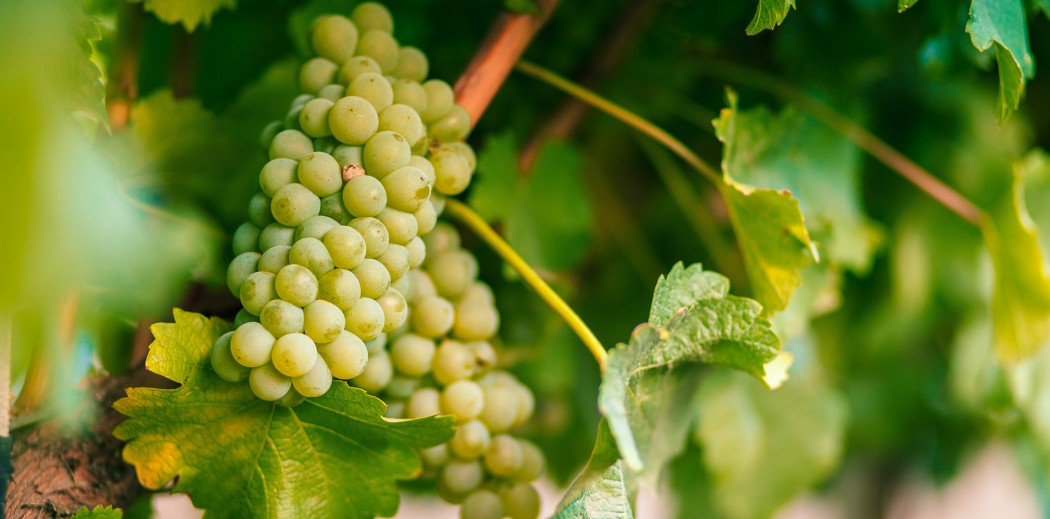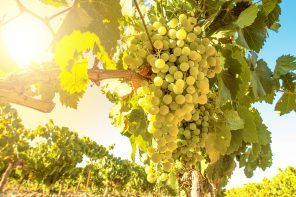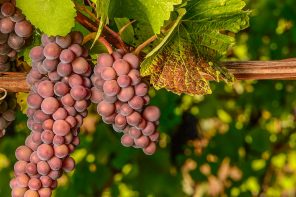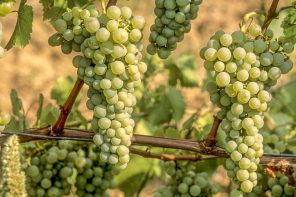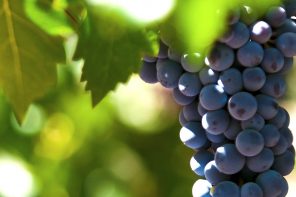Greece is an ancient winemaking country whose vinous endeavors have been all too often overlooked in recent decades. If you’re a fan of food-friendly wines with mouth-watering acidity, do yourself a favor and get to know Assyrtiko, one of Greece’s noblest white wine grapes.
This high acid grape comes from Santorini, a volcanic island which is part of the Cyclades in the Aegean Sea. The island, also known as Thera, was the site of a catastrophic volcanic eruption which took place sometime around 1600 BC. The Minoan eruption was one of the largest on record and was so violent that the caldera collapsed, filling with seawater and giving Santorini its striking crescent shape. Theories abound that this eruption may have been the source of the Atlantis myth and some scholars have linked it with the Biblical Book of Exodus and the flight of the Israelites from Egypt.
That same volcanism is what makes Santorini’s viticulture so unique and gives the indigenous Assyrtiko its characteristic minerality. You’ll come across Assyrtiko on other Aegean islands like Paros, Naxos and even Crete, as well as mainland Greece but Santorini is its home and undoubtedly the place where the best examples are made. Santorini’s volcanic soils offer Assyrtiko protection from phylloxera and own root* old vines are common in vineyards across the island. Some vines are believed to be hundreds of years old, a real rarity in the post-phylloxera world of wine.
Cool, dry northerly winds known locally as meltemi keep temperatures in check at night, further preserving acidity and help keep mold and mildew at bay. All in all, Assyrtiko is phenomenally disease resistant. But strong winds can strip the vines and as a result, the vines are bush-trained into a low basket shape called a kouloura. This method of vine training has been perfected over millennia and protects grape bunches from the worst abuses of sun and salty sea breezes.
Style-wise, modern Assyrtiko tastes of citrus, stone fruits, quince and flowers. It’s salty and has an incredible minerality. Grapes become quite ripe in the Mediterranean sun. What sets it apart is its natural ability to retain high acid levels in spite of the heat. To that end, the dry versions of this wine are full-bodied yet refreshing. It seldom spends time in barrel but there are a few notable exceptions.
Sweet versions are also produced. Most famously, Assyrtiko is blended with ancient local grapes Athiri and Aidani to make Vinsanto (wine of Santorini). This nectar is made from late-harvested grapes which are then dried on straw mats in a process called liasta, which is analogous to Italy’s passito. But don’t confuse it with Italian Vin Santo. The production dates back thousands of years to when the Greeks laid down much of the foundation for Western Civilization.
Vinsanto reached the height of its popularity during the Byzantine Empire but remained a cherished commodity while Santorini was under Venetian dominion. Even under the Ottoman rule which followed, Vinsanto trade continued, despite the fact alcohol was otherwise verboten. Vinsanto is like caramel and toffee, can be spicy and even taste of red fruits despite being made from white grapes. Perhaps this was the nectar which Tantalus was said to have stolen from the gods.
Then there’s Nykteri. Based on Assyrtiko blended with Athiri and Aidani, Nykteri is a traditional wine whose origins are rather unclear but possibly offers us a sip of what Santorini’s wines might have resembled in the past. Production takes place under the cover of darkness, a fact alluded to in its very name which translates to “night’s work.” Grapes are pressed at night to help preserve acid and freshness. The juice is fermented then the wine is aged in barrel for at least three months.
Although it is famous throughout Greece, Assyrtiko hasn’t taken off in vineyards worldwide baring Australia. Producers like Jim Barry have had success experimenting with the variety. Assyrtiko is delightful, refreshing yet Daedalian in its complexity and all the proof you need that after thousands of years, the wines of Greece still have much to offer oenophiles.
*Own rooted means that these Assyrtiko vines are ungrafted. Because of the damage done to vines by phylloxera louse, most of the world’s vines are grafted onto phylloxera-resistant rootstocks which are typically not vitis vinifera. Why is this important? Some believe own rooted vines are more flavorful and produce better wines!

